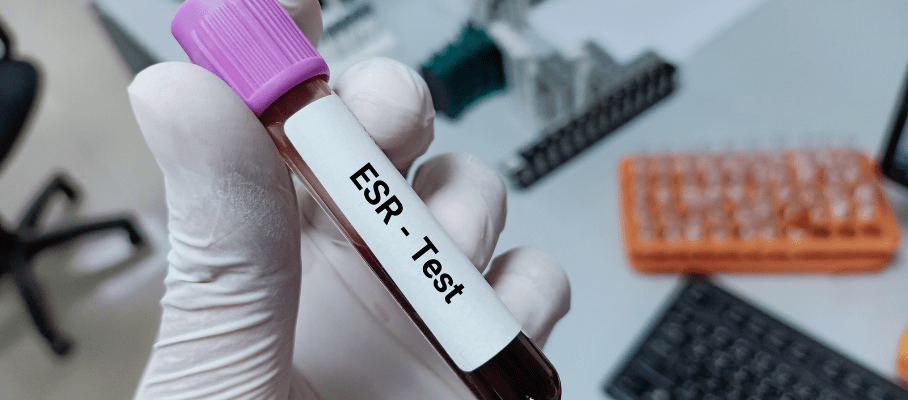Preventive Healthcare
Anterior Vs Posterior Placenta: Are They Same or Different?

Table of Contents
When you're pregnant, every scan and report can feel overwhelming. One of the terms you may hear from your doctor is placenta position in pregnancy—whether it is anterior or posterior. If you're wondering what that means and how it might affect your pregnancy, you're not alone.
The placenta plays a crucial role in supplying oxygen and nutrients to your baby while also removing waste. It attaches to the wall of the uterus, but its exact placement can vary. Some women have an anterior placenta, while others have a posterior placenta—both are completely normal but come with slight differences.
Here, we will explain the difference between anterior and posterior placenta, how their positions can affect your pregnancy, and the possible risks and benefits associated with each.
What is Anterior Placenta?
An anterior placenta means that the placenta is attached to the front wall of the uterus, facing the belly. This positioning occurs when the fertilised egg implants on the front side of the uterus. Since the placenta lies between your baby and your abdominal wall, it can act as a cushion, making it harder to feel early baby movements.
This type of placenta is completely normal and does not usually cause complications. However, it may sometimes make it difficult for healthcare providers to detect your baby's heartbeat during routine check-ups because the placenta is positioned in front of the baby.
Women with an anterior placenta may experience the following:
- Delayed Fetal Movements: Because the placenta absorbs the baby's kicks, you might not feel movements as early as someone with a posterior placenta.
- Challenges in Ultrasound Imaging: An anterior placenta may make it slightly harder for sonographers to get a clear image of your baby.
- Potential Risks: In some cases, an anterior placenta may increase the risk of placenta previa risks, where the placenta covers the cervix. This condition requires close monitoring.
Despite these minor differences, an anterior placenta does not significantly impact pregnancy health in most cases.
What is Posterior Placenta?
A posterior placenta is when the placenta is attached to the back wall of the uterus, facing the spine. This is also a common and normal placental position.
Women with a posterior placenta often experience:
- Earlier and Stronger Fetal Movements: Since the placenta is positioned behind the baby, there’s nothing absorbing the baby’s kicks, making them easier to feel.
- Easier Ultrasound Imaging: The baby’s face and body are more visible in scans, leading to clearer images.
- Smoother Doppler Readings: Since the placenta is not blocking the baby, it’s easier to detect the heartbeat with a Doppler.
There are many posterior placenta benefits, including an easier time tracking fetal movements, which can be reassuring for expectant mothers.
Key Differences Between Anterior and Posterior Placenta
While both placental positions are normal, here is a quick difference between anterior and posterior placenta:
|
Anterior Vs Posterior Placenta |
||
|
Feature |
Anterior Placenta |
Posterior Placenta |
|
Location |
Front wall of the uterus (towards the belly) |
Back wall of the uterus (towards the spine) |
|
Fetal Movement |
May feel movements later due to cushioning |
Movements felt earlier and more strongly |
|
Ultrasound Visibility |
Sometimes harder to see the baby clearly |
Baby is more visible in scans |
|
Doppler Heartbeat Detection |
May take longer to detect due to placenta blocking signals |
Easier to detect the heartbeat |
|
Labour and Delivery |
No major impact unless it causes complications like placenta previa |
No major impact on labour |
Both positions are normal and do not usually cause concerns unless specific complications arise.
How Can Placental Position Affect Pregnancy?
The position of your placenta can influence certain aspects of pregnancy but does not determine its overall success.
- Fetal Movements: With an anterior placenta, you may feel movements later, while with a posterior placenta, movements tend to be stronger and felt earlier.
- Ultrasound Clarity: An anterior placenta may make ultrasounds slightly more challenging, but it does not affect the health of the baby.
- Labour and Delivery: Neither anterior nor posterior placental position significantly affects labour unless complications like placenta previa risks
Most women with either placental position have completely normal pregnancies and deliveries.
Risks and Benefits of Anterior and Posterior Placenta
While both placental positions are generally safe, here is a look at their risks and benefits:
Risks of Anterior Placenta
- Delayed Fetal Movement Perception: You might not feel kicks until later in pregnancy.
- Ultrasound and Doppler Challenges: It may be harder to detect the baby’s heartbeat.
- Increased Risk of Placenta Previa: In some cases, an anterior placenta may be positioned low, increasing placenta previa risks.
Posterior Placenta Benefits
- Early and Strong Fetal Movements: You can feel kicks and movements sooner.
- Better Ultrasound Visibility: The baby’s face and body are easier to see.
- Easier Labour Monitoring: The baby's heartbeat is easier to detect.
Pros and Cons of Both Anterior and Posterior Placenta
Pros of Anterior Placenta
✔ Acts as a cushion, making pregnancy discomfort from strong kicks less intense.
✔ Completely normal and not a cause for concern.
✔ No significant effect on labour or delivery in most cases.
Cons of Anterior Placenta
✖ Can delay feeling baby movements.
✖ May make Doppler readings and ultrasounds slightly more challenging.
✖ May be associated with a slightly higher risk of placenta previa risks.
Pros of Posterior Placenta
✔ Easier to feel fetal movements, providing reassurance.
✔ Better ultrasound imaging, leading to clearer scans.
✔ Easier heartbeat detection via Doppler.
Cons of Posterior Placenta
✖ No cushioning effect, meaning some kicks may feel stronger and even uncomfortable.
✖ Slightly higher risk of back labour, as the baby’s position may contribute to increased back pain.
Conclusion
Both anterior and posterior placenta are normal variations of placental positioning, each with its own characteristics. An anterior placenta cushions fetal movements and may slightly delay their perception, whereas a posterior placenta allows for earlier and stronger movements.
Neither significantly impacts pregnancy, though conditions like placenta previa risks may require monitoring. Understanding your placenta position in pregnancy can provide reassurance and help in tracking fetal health.
For accurate pregnancy-related diagnostics, Metropolis Healthcare offers reliable testing with expert pathology services and quality care for expectant mothers.
FAQs
Which placenta position is better for normal delivery?
Both anterior and posterior placentas are normal and usually do not affect vaginal delivery. However, a posterior placenta may slightly favour an optimal fetal position for birth. Complications arise only if the placenta is too low, leading to placenta previa risks, which may require medical attention.
Can the placenta position change during pregnancy?
Yes, the placenta can shift as the uterus expands. If it is low-lying early on, it may move upwards by the third trimester. However, if it remains too low (placenta previa), medical supervision is required to avoid complications during delivery. Regular ultrasounds help track placental movement.
Are there risks associated with an anterior placenta?
Yes, though usually harmless, an anterior placenta can make it harder to feel fetal movements early. It may also slightly complicate ultrasounds and Doppler readings. In some cases, it increases the risk of placenta previa, which requires monitoring to prevent complications during labour and delivery.
How can I know if I have an anterior or posterior placenta?
Your doctor determines placental position during an ultrasound, usually around 18-20 weeks. If the placenta is at the front of the uterus, it’s anterior; if at the back, it’s posterior. This information helps assess fetal movement patterns and any necessary pregnancy monitoring.
Can anterior and posterior placenta coexist (placenta bilobata)?
Yes, a placenta bilobata occurs when the placenta develops into two lobes, which can be positioned anteriorly and posteriorly. It is generally not harmful but may increase the risk of complications like retained placenta or vasa previa. Doctors monitor this condition closely through ultrasounds.































